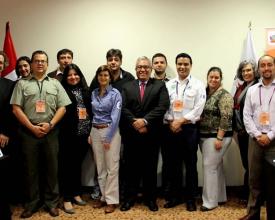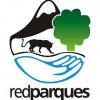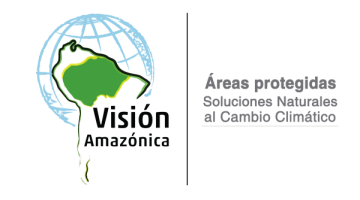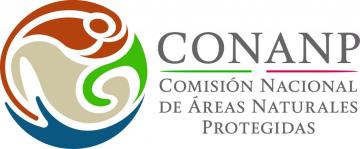
REDPARQUES Declaration, from national commitments to international interventions
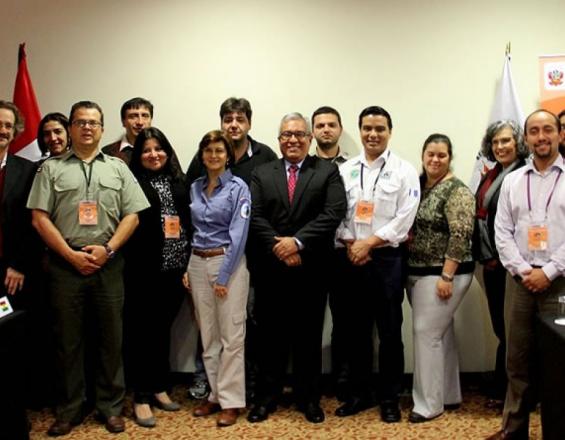
The Latin American Technical Cooperation Network on National Parks, other Protected Areas, and Wild Flora and Fauna- also known as REDPARQUES -adopted a Declaration on protected areas (PAs) as natural solutions to climate change.
During COP 21 of the UN Climate Change Convention (UNFCCC), 18 Latin American countries highlighted the role of protected areas for implementing climate change mitigation and adaptation, by providing the "green infrastructure" required. This Declaration is based on the interrelation between biodiversity and climate change.
REDPARQUES Declaration states that PAs offer the opportunity to stabilize the concentration of greenhouse gases (GHG) in the atmosphere, to guarantee the sustainable use of ecosystem services, to reduce the vulnerability of communities and to meet the necessary conditions for adaptation processes.
Lastly, the Declaration recognizes the importance of the Amazon as an ecosystem that secures ecosystem services and communities' resilience.
Contexte
Challenges addressed
Environmental:
-Deforestation and ecosystem degradation are contributing to climate change by releasing greenhouse gases and halpering delivery of kew ecosystem services for adaptation to climate impacts and disaster risk reduction. PAs help reduce emissions and support continued provision of ecosystem services.
Social:
-The stakeholders involved in nature protection, including through PAs, lack sufficient visibility and power within the climate change arena in the region, in order to effectively support countries' mitigation and adaptation efforts.
-Bringing together leaders of 18 different Latin American Systems of Protected Areas for a common goal.
Economic:
-Climate change strategies requiere financing on the part of governments of the region, which have limited capacities to provide it. Nature-based strategies, such as PAs, are particularly appropriate in this context because are cost-effective, socio-economically viable and represent a low risk financial investment.
Emplacement
Traiter
Summary of the process
The policy analysis made as part of an NGO project resulted in the identification of gaps at a regional scale. This project proposed a Declaration that needed a stronger institutional structure in order to become a reality.
REDPARQUES is an institution working on the protected areas' and climate change's issues. REDPARQUES member's have background working on the matter and saw the necessity of making such commitments. This institution was opened to work and adopt that Declaration.
The previous work and experience of REDPARQUES gave the Declaration the necessary power and strength it required to be visible for leaders and PAs agencies of all the world.
Now the Declaration is a model to be replicated at a global level.
Building Blocks
REDPARQUES, a network for protected areas
The Latin American Technical Cooperation Network on National Parks, other Protected Areas, Wild Flora and Fauna, known as REDPARQUES, is a network of public and private institutions working on Protected Areas (PAs) and conservation of flora and fauna. This Network was the basis for the development of political commitment surrounding the Declaration on PAs and climate change (CC).
REDPARQUES was created in 1983, responding to the need to improve Latin American PAs management and the willingness to share technical knowledge and experiences on the matter.
Since its creation, REDPARQUES has significantly contributed to the development of institutional capacitites of PAs' agencies and PA's staff, offering an opprotunity to discuss, share scientific and technical information and to promote regional strategies for PAs.
Lastly, this network has strengthened the communication and the bonds between different National Systems of protected areas, which, at the same time, has boosted the creation of national/regional agendas related to the United Nationals Framework Convention on Climate Change, the Convention on Biological Diversity (Aichi Targets) and the 2030 Agenda for Sustainable Development (Sustainable Development Goals - SDGs).
Enabling factors
-Promoted inclusion of CC issues at the national level in PAs agencies through experience exchange and knowledge development
-Public commitment of Latin American countries to be part of REDPARQUES activities
-A good leader (Peru's PAs agency CEO-SERNANP), chosen by the members of REDPARQUES, to guide the actions of the network and establish a workplan
-Good outcomes framed under this network, which strengthen its capacities and scope
Lesson learned
-The network has favored the sharing of knowledge and experiences. This process strengthens, at the same time, the management of protected areas of Latin America.
-Support for nature-based solutions in climated change discussions can be harnessed by showing political commitments to action by governments through a regional platform, such as REDPARQUES.
-Policy claims relating to nature-based solutions gain relevance when backed by strong evidence; e.g. on the role of PAs for mitigation and adaptation; action on the ground.
Development and signing of the Declaration: a call for action
On 2015, 19 leaders of National Systems of PAs met in Peru (Argentina, Bolivia, Brazil, Chile, Colombia, Costa Rica, Cuba, Ecuador, El Salvador, Guatemala, Honduras, Mexico, Nicaragua, Panama, Paraguay, Peru, Dominican Republic, Uruguay &Venezuela). One of their main objetives was to make a Declaration about the relevance of PAs for climate change (CC), & present it at the UNFCCC COP21 held in Paris in 2015.
18 leaders agreed to sign a Declaration that states:
-PAs contribute to stabilize greenhouse gases' concentrations
-CC makes PAs and biodiversity vulnerable
-PAs contribute to CC adaptation, vulnerability reduction & to increase the resilience of ecosystems
-PAs are one of the most effective strategies for deforestation & ecosystem degradation
And commited to:
1) Manage PAs considering regional and sub-regional interactions & coordination with the UNFCCCC
2) Strengthen PAs systems through implementation of the CBD’s, Aichi Target 11
3) Promote participatory management with local communities
4) Work with local communities & recognize traditional knowledge
5) Integrate PAs in adaptation, mitigation & sustainable development strategies
6) Promote awareness of PAs key role on CC
Enabling factors
-A prior set network that facilitate sharing of knowledge and experiences
-A network recognized globally by its work on PAs matter
-Different countries working by themselves on climate change mitigation and adaptation through protected areas
-Shared vulnerabilities and ecosystems between countries
-National programs and strategies that recognize protected areas as natural solutions to climate change
Lesson learned
-The countries and institutions understand that climate change cannot be completely addressed individually, but that global and regional action is required
-Shared vulnerabilities and problems must be solved by all the involved parties
-Presenting the Declaration at the COP showed the urgency to promote protected areas (vulnerable to climate change and other anthropogenic pressures) as natural solutions to climate change
-The Declaration committed leaders of the world to take immediate action on mitigation and adaptation to climate change, through the conservation and restoration of ecosystems
-The Declaration made evident that more leaders of the world need to make commitments on the matter
NGOs initiatives turning into Regional Action
The Declaration of REDPARQUES was proposed by the SNACC project team in the Frebruary 2015 directive committee meeting of the Project, composed by REDPARQUES members of Colombia, Ecuador and Peru. It was adopted by REDPARQUES and later approved by its members at REDPARQUES annual meeting (2015) and presented at the UNFCCC 21st COP, in Paris, December 2015.
From then owards, the initiative of the Declaration was led by REDPARQUES with the technical support of the SNACC project in the areas of policy incidence, communications and scientific evidence.
-Policy component: political advocacy at the regional and national levels started with the establishment of a baseline on progress achieved by Amazon countries in integrating PAs and CC in their policy instruments. Through the publication "Políticas públicas de los países amazónicos y cambio climático. APs como estrategia de adaptación", public policies, laws, agreements and regulations (national, subnational and regional) were analized.
-Communications: several materials were produced around the issue of PAs as natural solutions to CC.
-Scientific evidence: a publication was produced, identifying the role that Amazon PAs play in increasing resilience of the Amazon biome: "Vulnerability and Climate Risk Analysis of the Amazon and its PAs"
Enabling factors
-Funding from the the Federal Ministry for the Environment, Nature Conservation, Building and Nuclear Safety (BMUB) of Germany
-Participation of NGOs: WWF Living Amazon Initiative (LAI)
Lesson learned
-The status of CC-related policies in the Amazon countries (Colombia, Ecuador and Peru) and degree of integration of PAs in these policies.
-Limiting factors, in terms of territories, institutions, capacities and instruments for those CC-related policies.
-Recommendations, specifying opportunities for short-term actions.
-Policy analysis can contribute to determine gaps and action required in order to attend climate change, and to make evidence the role of protected areas as natural solutions to this phenomenon.
Impacts
- Several signatories included PAs as climate change strategies in their Nationally Determined Contributions under the Paris Agreement (e.g. Colombia, Ecuador, Mexico)
- New environmental policies and laws of the signatory countries recognize the role of PAs as cc strategies (e.g. Ecuador's Organic Environmental Code)
- PAs Agency's authorities have been included for the first time in their countries' official delegations to the UNFCCC's COPs (e.g. Colombia, Ecuador, Peru)
- CBD COP13 Decision mentions regional initiatives and the contribution of PAs as natural solutions to climate change
- Stating the relevance of the Amazon under an international declaration facilitates its protection and helps the process of mitigating and adapting to climate change.
- PAs can be used to meet other international conventions and targets, such as the Aichi Targets, Sustainable Development Goals (SDG) and REDD+
- The Declaration shows the importance of having PAs integrated for planning of climate change agendas and for financial regimes
- The Declaration endorses the commitment of countries for protecting biodiversity and to meet climate change agendas. It is a force required to boost the commitment of other countries.
Beneficiaries
-Local: communities living inside and from PAs
-National: PAs agencies and CC authorities of 18 Latin American countries
-Regional: REDPARQUES
-Global: PAs networks of the world and the international communities affected by climate change
Sustainable Development Goals
Story
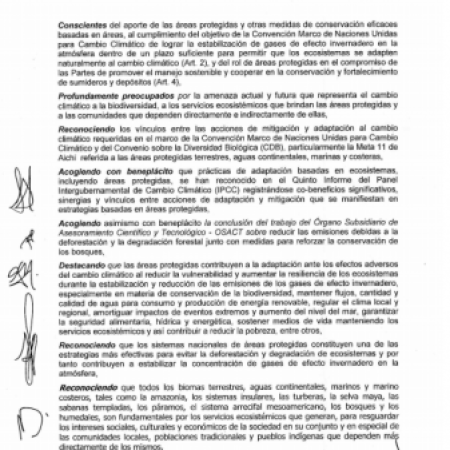
On August 2015, members of the Latin American Technical Cooperation Network on National Parks, other Protected Areas, Flora and Wild Fauna (REDPARQUES) met at Lima, Peru. In order to strengthen the cooperation and improve the managment capacities of 19 different countries. Leaders discussed the importance of signing a Declaration about protected areas (PAs) and climate change (CC). The result was "REDPARQUES Declaration", a document in which 18 countries recognize the role of protected areas for mitigating the effects of climate change, and for helping communities and ecosystems to adapt to its effects.
The Declaration was officially submitted to the UNFCCC Secretariat and presented at side-events and a press conference at COP21, with a total of 200 government and civil society attendees.
The activities at COP21 in Paris resulted in the inclusion of PAs as a CC stategy in the discourse of high level environmental authorities (governments, multilateral institutions, civil society and academia) at SNACC events and press conferences, as well as in other COP21-related events and the inclusion of PAs in the Nationally Determined Contributions (NDCs) of Colombia, Ecuador and Peru, as part of their strategies and commitments to face CC.
After COP21, several activities took place to continue positioning the REDPARQUES Declaration. For example, there was a contribution to Issue 22.1 of IUCN WCPA’s peer review journal, PARKS, by co-writing an editorial on the role of PAs as natural solutions to CC and on the REDPARQUES Declaration (published online on 14 March 2016). In May, responding to a request from WCPA's Natural Solutions Specialist Group, the Declaration was resented at the WCPA Steering Committee meeting, achieving the official support of WCPA President, Kathy MacKinnon, and the interest of some of the vice chairs of different regions in replicating the Declaration. At the World Conservation Congress (Hawaii, September, 2016) several events took place where the Declaration was discussed by different stakeholders in order to present progress on implementation, and explore the possibility of replicating it in other regions of the world. REDPARQUES also promoted its declaration at CBD COP13.
